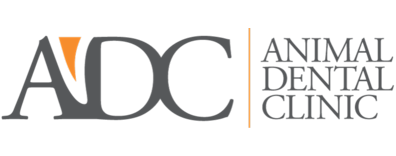Oral Health
Oral Health

When approaching the subject of oral health and oral disease in animals, there are a few concepts and terms that are helpful to understand.
Oral Pain
Oral disease is inherently painful, but animals, including dogs and cats, conceal it. Keeping this in mind and looking beyond the façade that pets present to us can lead to significant improvement in our pets’ quality of life.
The oral cavity of animals is innervated (“wired”) by the same type of nerves in dogs and cats as in humans. These nerves collect information, including information about harmful or painful stimuli, and allow for quick, reflex responses as well as carry this information on to other parts of the brain. This sharp perception of pain is an effective warning and protective mechanism in animals and humans alike. The same nerves also inform the brain when structural damage to the oral cavity occurs. Oral pain is proportional to the severity and extent of the problem. In cases where the problem and associated pain is significant, impairment or loss of function occurs.
Despite the fact that there are no differences in how humans and animals experience oral pain, when it comes to voluntary display of oral pain, only humans are willing to let others know that they are in pain.
In nature, oral pain is a liability for the individual and the group to which belongs. In animals, displaying oral pain may trigger retaliatory, competitive, or predatory behavior from others. There are rare situations for animals, such as an accident, where oral pain is sudden, overwhelming, and unexpected; in these cases, a brief involuntary vocal expression of oral pain can occur.
A very observant person might, but will not always, be able to detect chronic pain in their pet by noticing that they have decreased interest in chewing, increased salivation, or reluctance to be handled around their mouth. Signs of pain can be subtle, and may even be perceived as normal for an aging pet.
Of all oral problems found in animals, the vast majority are found during routine oral examination, rather than because the animal appeared painful.
Oral Blood Supply
Tissue maintenance and repair in the harsh oral environment requires a robust blood supply. A notoriously dense and well-supplied network of blood vessels is found below the gingiva and oral mucosa. While this can make surgical procedures more challenging, it also promotes healing, under the correct circumstances.
Besides providing nutrients and oxygen and removing waste from the cells of oral tissues, the local blood supply is responsible for the local immune response, healing, clotting, and scar tissue formation. The local blood supply also brings water from which saliva is made and, especially in dogs, allows for body temperature regulation by bringing blood that has been cooled from panting back to the body. Any impairment to normal blood flow can affect oral health.
Oral Function
A pet’s mouth does important work; the most obvious job is picking up food, chewing, and swallowing. Other jobs that one might not think of as readily are defense, grooming, breathing and cooling. Performance or service animals may have to use their mouths to do very specific tasks like retrieving and apprehending. These jobs cannot be done well if the oral disease has interfered with the mouth’s ability to perform at its full potential. Oral dysfunction can go on to affect a pet’s overall well-being. For example, having difficulty or pain with opening the mouth can result in decreased grooming and weight loss.
Oral Balance
Here, we introduce a new concept called oral balance. Oral balance occurs when the oral cavity is structurally sound, pain-free, and functioning normally.Despite outward appearances, the oral cavity is actually a harsh environment where tremendous mechanical (teeth, muscle, and foreign objects), biological (bacteria, viruses, and the immune system), and chemical (pH, food, potential toxins) forces interact.In health, each force is maintained within safe boundaries and is neutralized by an equal and opposite force, thus the term oral balance.Oral balance is disturbed when oral forces become excessive and are not matched by their opposite and counterbalancing forces. The result of this oral unbalance is damage to the oral structures, pain, and impairment of normal function.
Mechanical forces: Mechanical forces are generated internally by masticatory (chewing) and oral (tongue and cheeks) muscles. Masticatory muscles move the mandible (lower jaw) against the maxilla (upper jaw). The oral muscles act in synchronized opposition to each other and move food, water, and saliva about the mouth. External mechanical forces such as projectiles and traumatic accidents may also impact the oral cavity.To chew food or other materials, mandibular and maxillary teeth apply force to each other proportional to the hardness of the food. When the masticatory muscles press the tooth against materials that are harder than teeth (such as plastic, bone, some wood, and metal), the tooth is the weakest component, and the masticatory muscles are strong enough to break (fracture) the teeth. Similarly, when strong external forces (such as a car) are applied to teeth, fractures can occur.
Biological forces: The body protects itself against the spread of oral microorganisms (bacteria and viruses) by maintaining oral anatomical barriers (oral mucosa, gingiva, enamel), constant cleansing (saliva flow, swallowing, and the motion of cheeks and tongue against teeth), and the action of the local immune system (white blood cells and antibodies).In health, the bacteria attached to the oral mucosa, gingiva and enamel are maintained at a normal, manageable, level. Oral bacteria are more likely to invade underlying tissues when oral barriers break down, when cleansing functions aren’t working well, and when the local immune system is ineffective. Conversely, excessive action by the immune system against normal oral bacteria can cause problems.
Chemical forces: Substances that enter the oral cavity can be either beneficial or harmful and can have varying pH and other chemical properties. These substances are usually water and food, but may also include drugs, toxins and ingested foreign material.Under normal circumstances, the chemical forces from incoming materials are diluted or neutralized by the oral environment.If chemical forces applied to the oral cavity are overwhelming, such as a significant drop in pH, oral balance is compromised and the oral barrier surfaces can be damaged, resulting in mucosal burns, enamel erosions, and dental caries.
Oral Barrier
The concept of the oral barrier refers here to the thin layer of tissues (hard and soft) that cover and protect the underlying structures of the oral cavity. The oral barrier is the enamel that covers the teeth, the gingiva that protects the tooth roots and alveolar bone, and oral mucosa that covers the rest of the oral cavity. This barrier is continuously challenged and can be disrupted by excessive mechanical, biological, or chemical forces. If the damage is significant and the body is not able to repair the damage, oral disease takes place. Promoting oral heath starts with maintenance and frequent inspection of the oral barrier and includes repairing the barrier when needed.
